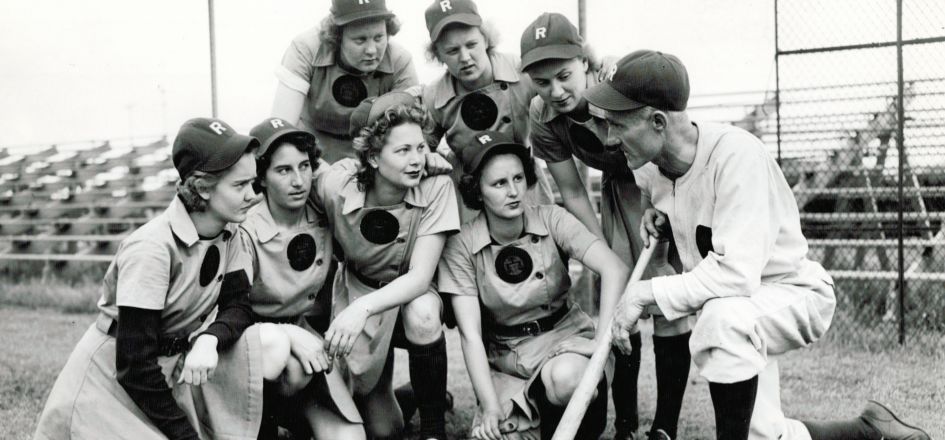Rockford IL History
Take a look at Rockford's rich history! Click on the links in the list to go to each section on the page:
The Early Years
Settlers and Ethnicities
Rockford University
A Growing Settlement
Top Furniture Industry
Machinery and Manufacturing
The Civil War and Anti-Slavery
Local Civil War Soldiers
Baseball in Rockford
Early Municipal Politics
Palmer Raids and New Leaders
Camp Grant
Late 20th Century Development
Miscellaneous Rockford History
Recognized Natives and Residents
The Early Years (1834)
Rockford, Illinois, was first settled in 1834-1835 by Germanicus Kent, Thatcher Blake, and Lewis Lemon, who came from Galena and established themselves on the west bank of Rock River; and Daniel Shaw Haight, who founded a settlement on the east bank. (Lemon, a slave, later bought his freedom, but stayed in the area as a truck farmer.) Halfway between Chicago and Galena, the community was briefly known as "Midway", but quickly became known as "Rockford", because of the excellent ford across Rock River. A post office was established in 1837. The settlement was incorporated as a village in 1839, and chartered as a city in 1852. The first weekly newspaper was published in 1840 and the first successful daily newspaper appeared in 1877. Between 1890 and 1930 the city had three daily papers.
Settlers and Ethnicities
The earliest settlers were chiefly from New York state and New England, but the city early acquired a modest cosmopolitan character. Large numbers of Irish-born immigrants arrived in the 1850s, and a few Swedish immigrants in 1852. After the Civil War, the Swedes began to come in large numbers and quickly became the largest ethnic group in the city. They settled chiefly on the east side, and in areas along 7th Street or Kishwaukee Avenue the Swedish language was as common as English as late as the 1920s. Other significant ethnic groups that had a presence in Rockford were the Italians (after 1880), Poles and Lithuanians (after 1900), Laotians, Vietnamese, and Hispanics (after 1970). One of the founders of the city, Lewis Lemon, was an African American, but the black population of the city was very small until the First World War, after which people from the south, particularly Arkansas and Mississippi, arrived.
Rockford University
Rockford Female Seminary was chartered in 1847, became Rockford College in 1892, and became fully coeducational in 1958. On July 1, 2013 the college became Rockford University. Best known of the college's graduates is Jane Addams (1881), founder of Chicago's Hull House and recipient of the Nobel Peace Prize (1930). Rockford Public Library, the second such institution in Illinois, opened to the public in August 1872.
A Growing Settlement (1851)
Rockford is the county seat of Winnebago County, and until the 1850s was a sleepy country village. But in 1851 the Rockford Water Power Company was organized and in 1852 the Galena & Chicago Union Railroad reached the city. By 1860 Rockford had become a significant, growing industrial center, noted for production of the John H. Manny reaper and other agricultural machinery.
Top Furniture Industry (1880s)
By the 1880s a furniture industry was begun, using the talents of Swedish craftsmen and capitalists, and in the first half of the 20th century Rockford was the second largest furniture-manufacturing center in the United States. Many of the furniture companies were cooperatives, reflecting a different business approach from that of the old Yankee entrepreneur, with laborers and craftsmen holding significant power. The agricultural implement industry was in decline by the First World War, and the furniture industry was severely damaged by the Great Depression and the Second World War. By the end of the 1960s both were extinct in the city.
Machinery and Manufacturing
Rockford's 20th Century industry revolved around machine tools, heavy machinery, automotive, aerospace, fastener and cabinet hardware products, and packaging devices and concepts. The city's industrial background has produced many important and interesting inventions, among them the Nelson knitting machine, airbrush, electric brake, electric garage door opener, dollar bill changer, and electronic dartboard. Some defunct Rockford concerns of historical interest are: Air Brush Manufacturing Company, Free Sewing Machine Company, Haddorff Piano Company, Hanson Clock Company, Hess & Hopkins Leather Company, Norse Pottery Company, Rockford Brewing Company, Rockford Silver Plate Company, and Rockford Watch Company.
The Civil War and Anti-Slavery (1840s-1860s)
Before the Civil War, Rockford was the center of an avid anti-slavery region. In 1845, Rep. Anson Miller introduced a bill in the state legislature in an unsuccessful attempt to repeal the Illinois "Black Laws." Former President Martin Van Buren, running as Free Soil presidential candidate in 1848, received 42% of the county's vote and missed winning the county by just 59 votes. In 1852, Senator John P. Hale, the Free Soil candidate, became the first presidential candidate to visit the city and managed a respectable 28% of the county's popular vote. In 1864, abolitionist H. Ford Douglass was briefly a resident of the city, helping in Lincoln's reelection campaign. After the Civil War, an important civil rights case from Rockford was decided by the Illinois Supreme Court, Chicago & Northwestern Railroad v. Anna Williams (1871). The decision supported African Americans' rights to unhindered use of public transportation, but was decided on such narrow legal grounds it was cited in support of the "separate but equal" doctrine established by the United States Supreme Court in Plessy v. Ferguson (1896).
Local Civil War Soldiers
When war broke out in 1861, one of the first Illinois military contingents to be mobilized was the Rockford Zouaves. Many of the Zouaves had been members of an earlier company, the Rockford City Greys, which was the first American company trained in the Zouave drill by Elmer Ellsworth. The Zouaves became Company D, 11th Regiment, Illinois Volunteer Infantry. Their captain, Garrett Nevius, eventually became Colonel of the 11th and was killed at Vicksburg in 1863. Another prominent Rockford soldier was Lt. Colonel Edward F. W. Ellis, of the 15th regiment, who was acting colonel when he was killed at Shiloh in 1862. From July to November 1862, the city was the site of Camp Fuller, training ground for the 74th, 92nd, 95th, and 96th infantry regiments. Another Rockford man, Jason Marsh, was Colonel of the 74th.
Batter Up!: Baseball in Rockford
In the six years following the Civil War, Rockford became nationally known in baseball circles, with the remarkable success of its Forest City Baseball Club. Led by Albert Spaulding (pitcher) and Ross Barnes (infield), the team had become the most prominent western club and joined the first professional baseball league, the National Association, for the 1871 season. Both stars had been hired away by Boston after the 1870 season, so the club's season was not particularly successful, despite the presence of Adrian Anson, playing his first major league season. Spaulding, Barnes, and Anson went on to significant careers in the National Association and its successor, the National League. Barnes, the first batting champion of the National League, is buried in Greenwood Cemetery, Rockford. The city was a member of the Northwestern League, the first minor league, in 1879, and since that time has frequently had a minor league club. During the existence of the All American Girls Professional Baseball League, 1944-1954, the city supported the Rockford Peaches, the team featured in the 1992 movie A League of Their Own.
Early Municipal Politics (1900s-1910s)
Rockford's municipal politics in the 19th Century often revolved around liquor issues, the "drys" and the "wets" often being about equal in electoral strength. In the 1890s, a national organization, the American Protective Association, anti-Catholic and anti-immigrant, had some effect in municipal politics, but the early 20th Century saw the rise of organized labor as a potent force locally. In 1907, Mark Jardine, nominee of the Union Labor League, was elected mayor, and was reelected as an independent in 1909. In the 'teens, the labor movement cooperated with the Socialists, and the two groups were able to elect aldermen and other officials, but not a mayor. Led by alderman Oscar Ogren, the labor-Socialist coalition pulled from 25% to 40% of the votes in mayoral elections. Anti-war protests spearheaded by the Industrial Workers of the World led to 118 arrests in 1917, and May Day 1919 was celebrated with a large parade, numbering between 1,000 and 3,000 participants.
Palmer Raids and New Leaders
In January 1920, Rockford was a principal target of the infamous Palmer Raids, and between 140 and 180 citizens were summarily arrested, charged with conspiracy and sedition. The most important result of these raids was the sedition trial of Arthur Person in the Winnebago County Court. Defended by Clarence Darrow, Person was found not guilty in April 1920. Undaunted by official terrorism, citizens of Rockford elected a new mayor in 1921, J. Herman Hallstrom, nominee of the newly formed Labor League. Hallstrom was a Swedish immigrant, a veteran, a union president, a former Socialist, and former editor of the newspaper Rockford Labor News. He was reelected twice, lost, then reelected twice again, before being permanently retired in 1933 by C. Henry Bloom, a former Socialist alderman with widespread labor support. Bloom served as mayor until 1951, with one four-year interruption. In the 1970s, the city's labor movement reawakened after a placid quarter century and a succession of moderate Democratic mayors were elected, oddities in a region of pronounced Republican inclinations.
Camp Grant
In the first half of the 20th Century, Rockford was an important military city. Camp Grant was opened south of the city in 1917, and thousands of soldiers were trained here for World War I. The camp was deactivated in 1921, and in 1924 was turned over to the state of Illinois as a permanent training center for the National Guard. Besides this use, it was the home of a Civilian Conservation Corps unit in 1933-1935. In 1940, Camp Grant was reactivated as a U.S. Army base and was a reception center for draftees, a training center for medical corpsmen, and finally a separation center. Between 1943 and 1946, German prisoners of war were housed at the camp to a maximum number of just over 2,000. Camp Grant was deactivated in 1946, and most of its territory is now divided between the Chicago Rockford International Airport and Seth Atwood Park.
Late 20th Century Development and New Establishments
In the last third of the 20th Century, Rockford dealt with many problems common to northern industrial cities, including tree blight, urban renewal, and, in the early 1980s, severe unemployment. In 1989, a group of concerned citizens began efforts to eliminate segregation and racial discrimination in the public school system. Other events in this period include the founding of Rock Valley Community College, establishment of the University of Illinois Chicago's UIC Health Sciences Campus at Rockford, creation of a local campus of nearby Northern Illinois University, construction of a civic center, and the emergence of the city as an important regional health care, entertainment and financial center. Currently, Rockford is the state's third largest city with a population of 147,651 in 2016.
Miscellaneous Rockford History
1858: The city's oldest social organization, the Rockford Burns Club, is founded to celebrate the birthday of Scots poet Robert Burns.
1884: The Mendelssohn Club, the oldest sustaining music club in the United States, is founded.
1916: The Booker Washington Center is founded. It is the oldest community center in Rockford and one of the oldest African-American community centers in the state.
1892: Rockford High School issues a yearbook, allegedly the second publication of its kind.
1907: Rockford High School's band is established, and is one of the earliest in the nation.
Recognized Natives and Residents
• Virgil Abloh, Boylan High School graduate and fashion designer, was named by Time magazine in 2018 one of 100 most influential people in the world.
• Jane Addams, Nobel Laureate and founder of Chicago's Hull House, was in Rockford College's (now Rockford University) first graduating class.
• Corey Anderson, a graduate of Hononegah Community High School where he competed in wrestling, is a mixed martial artist ranked #7 in 2018 in the UFC light heavyweight rankings.
• John B. Anderson ran for US President as a third-party candidate and was a multi-term Rockford Congressman.
• Jodi Benson, a singer best known for being the voice of Disney's Ariel, the Little Mermaid.
• Mildred F. Berry, speech pathologist and political activist
• Rob Bollinger, Olympic diver
• James H. Breasted, archaeologist and Egyptologist
• Hal Carlson, National League pitcher, 1917-30
• James E. "Hoss" Cartwright, Retired U.S. Marine Corp four-star general, eighth Vice Chairman of the Joint Chiefs of Staff, Commander of U.S. Strategic Command
• Admiral George Dufek, an Antarctic explorer, founded a base on the icy continent in 1958 and named it "Little Rockford."
• Kurt Elling, Jazz vocalist
• Harry Forbes, World bantamweight boxing champion, 1900-03
• Elizabeth "Libby" Gardner, an American pilot during World War II who served as a member of the Women Airforce Service Pilots. She was one of the first American female military pilots. (A famous photograph of her is painted as a mural in downtown Rockford.)
• Deb Genovese, Olympic luger
• Kenny Gould, Olympic boxer
• Barbara Hale, an actress who played Perry Mason's secretary Della Street on the long-running TV series, graduated from Rockford High School.
• Brad Hefton, world heavyweight kickboxing champion
• Jill Hollembeck, power tumbler
• Martin Johnson, Photographer and explorer
• General Laurence S. Kuter, Participant in the Yalta Conference (1945) and commander of NORAD
• Julia Lathrop, associate of Jane Addams, children's advocate, and Chief of the Children's Bureau, U. S. Department of Labor under Taft
• Sandy Lenz, Olympic skater
• Janet Lynn, Olympic skater
• Kathy Malmberg, Olympic skate
• Sammy Mandell, World lightweight boxing champion, 1926-30
• Lynn Martin, Secretary of Labor under President Ronald Reagan and former congresswoman, taught school in Rockford
• Angel Martinez, a student at Rockford Auburn High School, is the second youngest boxer to win a National Golden Gloves Championship.
• Marin Mazzie, Tony Award winning actress and singer known for her work in musical theater.
• Actor Aidan Quinn and his theatrical siblings are Rockford natives.
• Gordy McKellen, Olympic skater
• Bessica Medlar Raiche, physician and first woman to solo in an airplane (1911)
• Ron Merriott, Olympic diver
• Alexandra Nicholson, trampolinist
• Kate O'Connor, women's rights activist, labor leader, and government official
• Susan Saint James, actor
• Carl E. Swenson, Inventor of the universal joint for automobiles and landscape painter
• Mark Taylor, golfer
• Kevin Uliassi, the balloonist who set the world record in 2000 for the longest solo flight, launched his balloon from a quarry in Loves Park.
• Mountaineer Ed Viesturs climbed all fourteen of the world's eight-thousander mountain peaks.
• Fred VanVleet, an Auburn High School graduate, is point guard for the NBA's Toronto Raptors and RACVB's first Sports Tourism Ambassador. Fred hosts an annual summer camp in Rockford.
• Janice Voss, Astronaut
• Michelle Williams, singer, songwriter and actress once part of the group Destiny's Child, graduated from Auburn High School.
• Rock 'n' roll superstars Cheap Trick started as a garage band in Rockford and still live here.
• The Rockford Peaches, a top-flight women's baseball team formed in 1943 by Chicago Cubs owner Phil Wrigley, started a run which lasted for 12 years. (The team was featured in the movie A League of Their Own starring Tom Hanks, Madonna, Geena Davis and Rosie O'Donnell.)
• Novelists Paul Dale Anderson, Wayne Dundee, and Alice Beal Parsons(who sometimes use Rockford scenes and events in their work)
The most useful history of Rockford is by Jon W. Lundin, Rockford: an Illustrated History (1st edition, Windsor Publications, Inc., 1989; 2nd edition, American Historical Press, 1996). Lundin's history is well written and illustrated and has an intelligent interpretative framework, which makes it unique among the several histories of the city. Sinnissippi Saga; a History of Rockford and Winnebago County, Illinois, ed. C. Hal Nelson (Winnebago County Illinois Sesquicentennial Committee, 1968), is heavily illustrated, but problematical. Arranged topically and written by a committee, with no index, it suffers from lack of coherence and chronology. Some of the chapters are interpretatively weak, and many are now outdated, but the volume is frequently interesting and provides much information not readily available elsewhere. For 19th Century history, the various books of Charles A. Church are indispensable, although they are chiefly chronicles or annals, rather than works of analysis and interpretation.
--John L. Molyneaux, Local History Department, Rockford Public Library, 1997
















